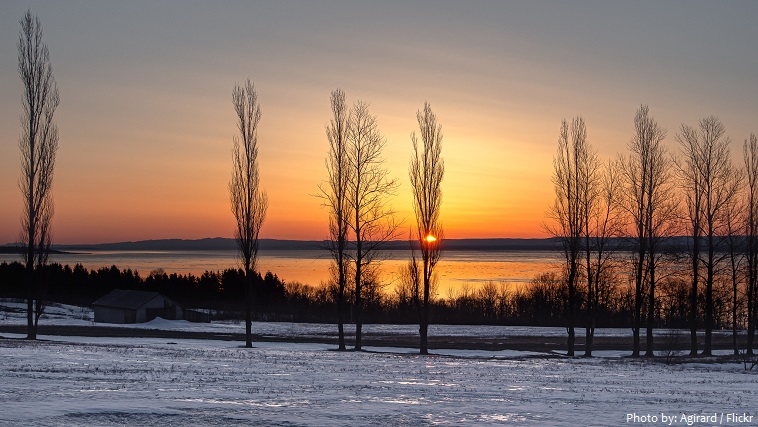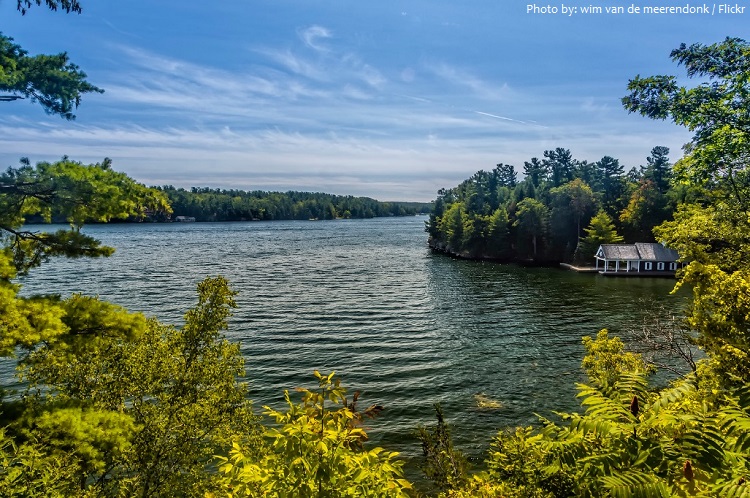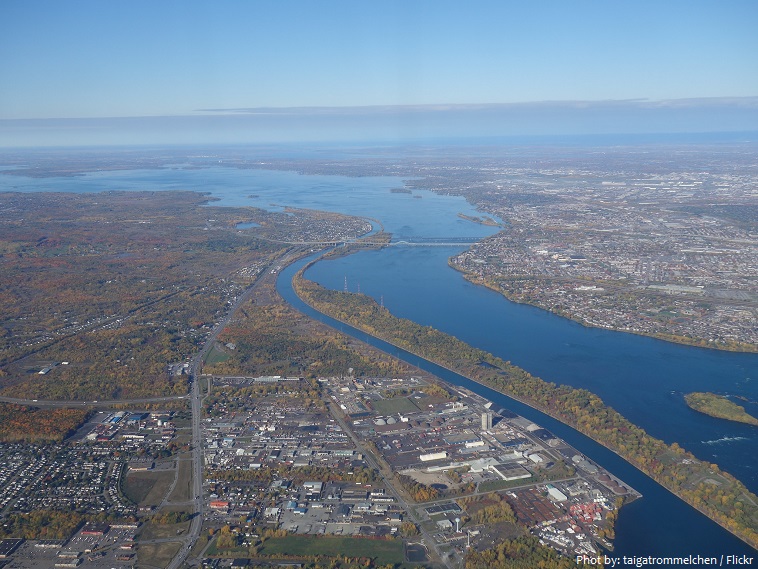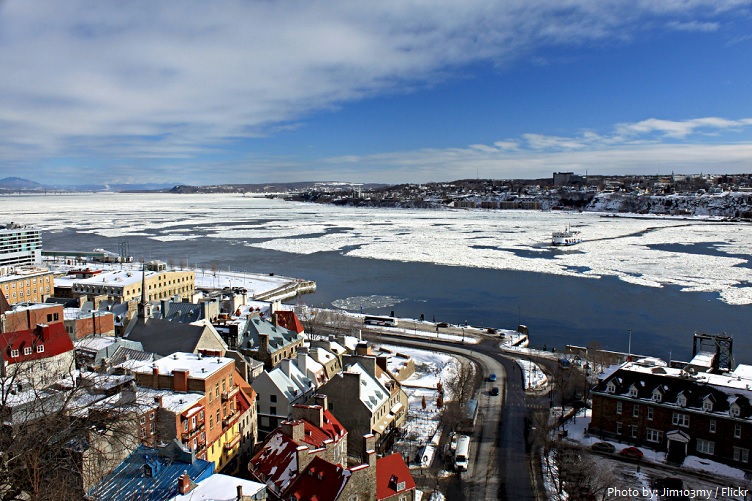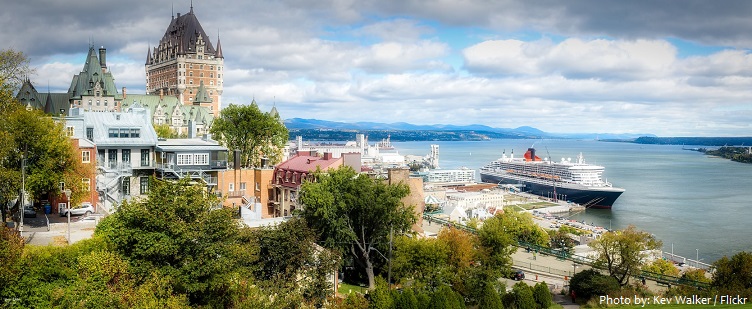The Saint Lawrence River is a large river in the middle latitudes of North America.
The length of the Saint Lawrence River is approximately 1,197 kilometers (744 miles).
The Saint Lawrence River flows in a roughly north-easterly direction, connecting the Great Lakes with the Atlantic Ocean and forming the primary drainage outflow of the Great Lakes Basin.
This river flowing mainly through Canada but is also following the United States border.
The Saint Lawrence River traverses the Canadian provinces of Quebec and Ontario, and is part of the international boundary between Ontario, Canada, and the U.S. state of New York.
It has the world’s 13th largest drainage basin, at 1,610,000 square kilometers (621,625 square miles). Its drainage area includes the Great Lakes the world’s largest system of freshwater lakes.
The basin covers parts of Ontario and Quebec in Canada, parts of Illinois, Indiana, Minnesota, New York, Ohio, Pennsylvania, Vermont, and Wisconsin, and nearly the entirety of the state of Michigan in the United States.
The estuary of the Saint Lawrence in Quebec is one of the largest estuary in the world.
Before the arrival of Europeans, the land along the river was inhabited by the St. Lawrence Iroquoians. They were an Indigenous people who existed from the 14th century to about 1580. They spoke Laurentian languages, a branch of the Iroquoian family.
French navigator Jacques Cartier becomes the first European explorer to discover the St. Lawrence River. In 1534, Cartier was commissioned by King Francis I of France to explore the northern American lands in search of riches and the rumored Northwest Passage to Asia. That year, Cartier entered the Gulf of St. Lawrence by the Strait of Belle Isle, explored its barren north coast for a distance, and then traveled down the west shore of Newfoundland to Cape Anguille. From there, he discovered Magdalen and Prince Edward islands, explored Chaleur Bay, and claimed Quebec’s Gaspe Peninsula for France. He then discovered the inlet of the St. Lawrence River, sailed north to Anticosti Island, and then returned to Europe.
The earliest regular Europeans in the area were the Basques, who came to the St Lawrence Gulf and River in pursuit of whales from the early 16th century. The Basque whalers and fishermen traded with indigenous Americans and set up settlements, leaving vestiges all over the coast of eastern Canada and deep into the Saint Lawrence River.
Control of the river was crucial to British strategy to capture New France in the Seven Years’ War. Having captured Louisbourg in 1758, the British sailed up to Quebec the following year thanks to charts drawn up by James Cook. British troops were ferried via the Saint Lawrence to attack the city from the west, which they successfully did at the Battle of the Plains of Abraham. The river was used again by the British to defeat the French siege of Quebec under the Chevalier de Lévis in 1760.
In 1809, the first steamboat to ply its trade on the St. Lawrence was built and operated by John Molson and associates, a scant two years after Fulton’s steam-powered navigation of the Hudson River.
Because of the virtually impassable Lachine Rapids, the Saint Lawrence was once continuously navigable only as far as Montreal. Opened in 1825, the Lachine Canal was the first to allow ships to pass the rapids.
During the Second World War, the Battle of the St. Lawrence involved submarine and anti-submarine actions throughout the lower Saint Lawrence River and the entire Gulf of Saint Lawrence, Strait of Belle Isle and Cabot Strait from May to October 1942, September 1943, and again in October and November 1944. During this time, German U-boats sank several merchant marine ships and three Canadian warships.
Because French navigator Jacques Cartier arrived in the estuary on Saint Lawrence’s feast day, he named it the Gulf of Saint Lawrence – in the early 1600s, this name was adopted for the river.
Saint Lawrence was one of the seven deacons of the city of Rome, Italy, under Pope Sixtus II who were martyred in the persecution of the Christians that the Roman Emperor Valerian ordered in 258. Lawrence encountered the future Pope Sixtus II, who was of Greek origin and one of the most famous and highly esteemed teachers, in Caesaraugusta (today Zaragoza). Eventually, both left Spain for Rome. When Sixtus became the Pope in 257, he ordained Lawrence as a deacon, and though Lawrence was still young appointed him first among the seven deacons who served in the cathedral church.
The Saint Lawrence River is partly within the U.S. and as such is that country’s sixth oldest surviving European place-name.
